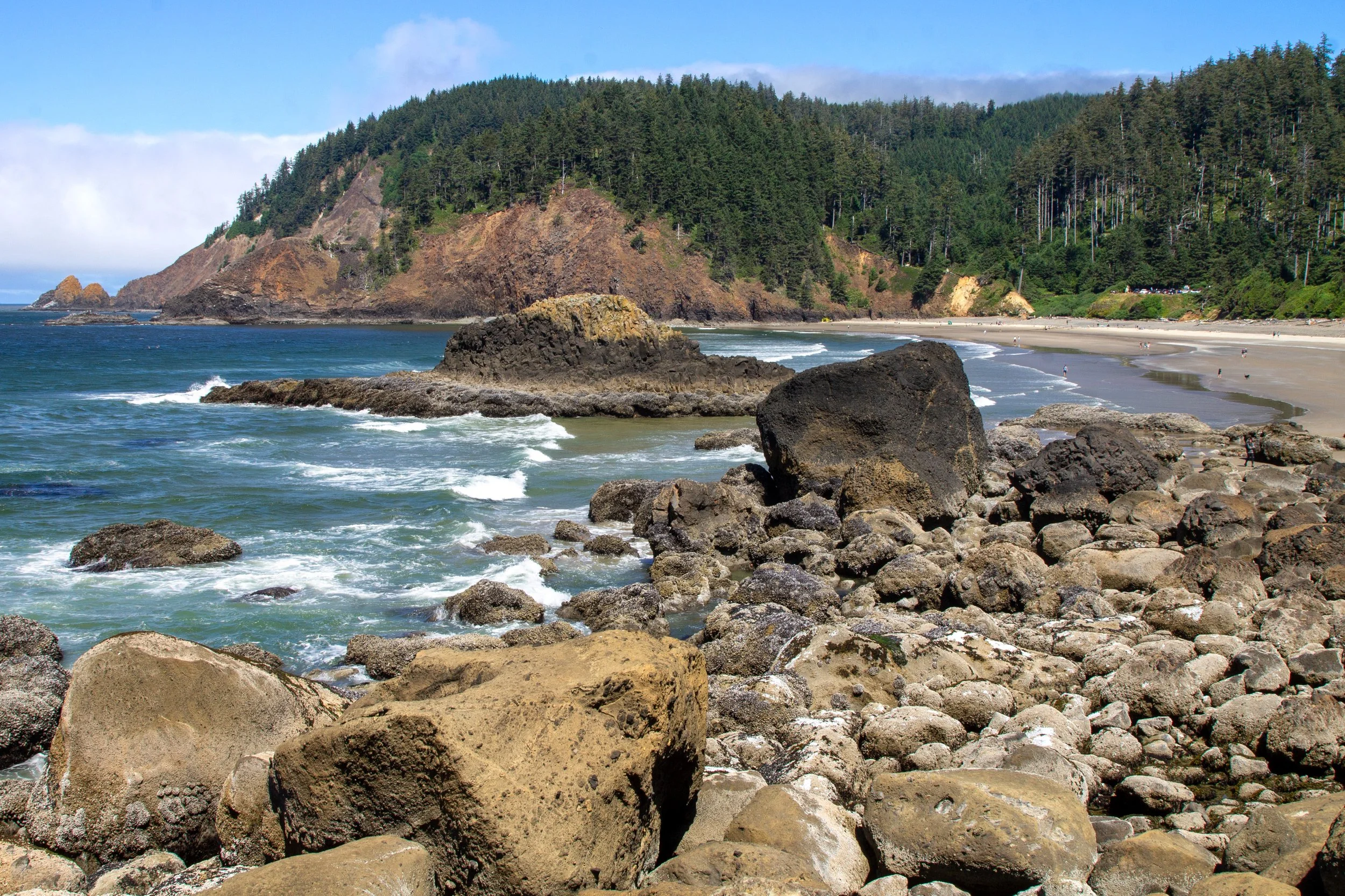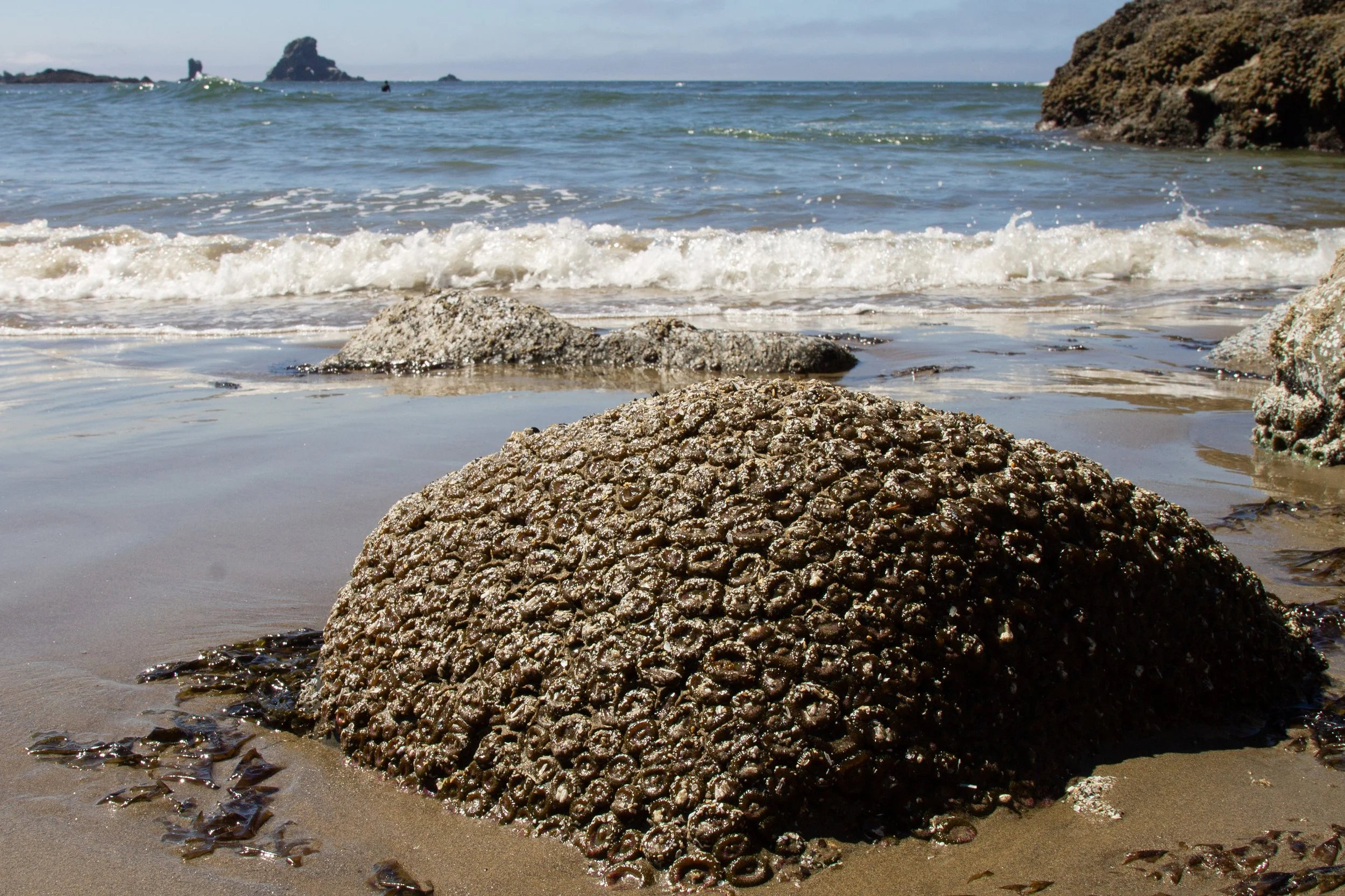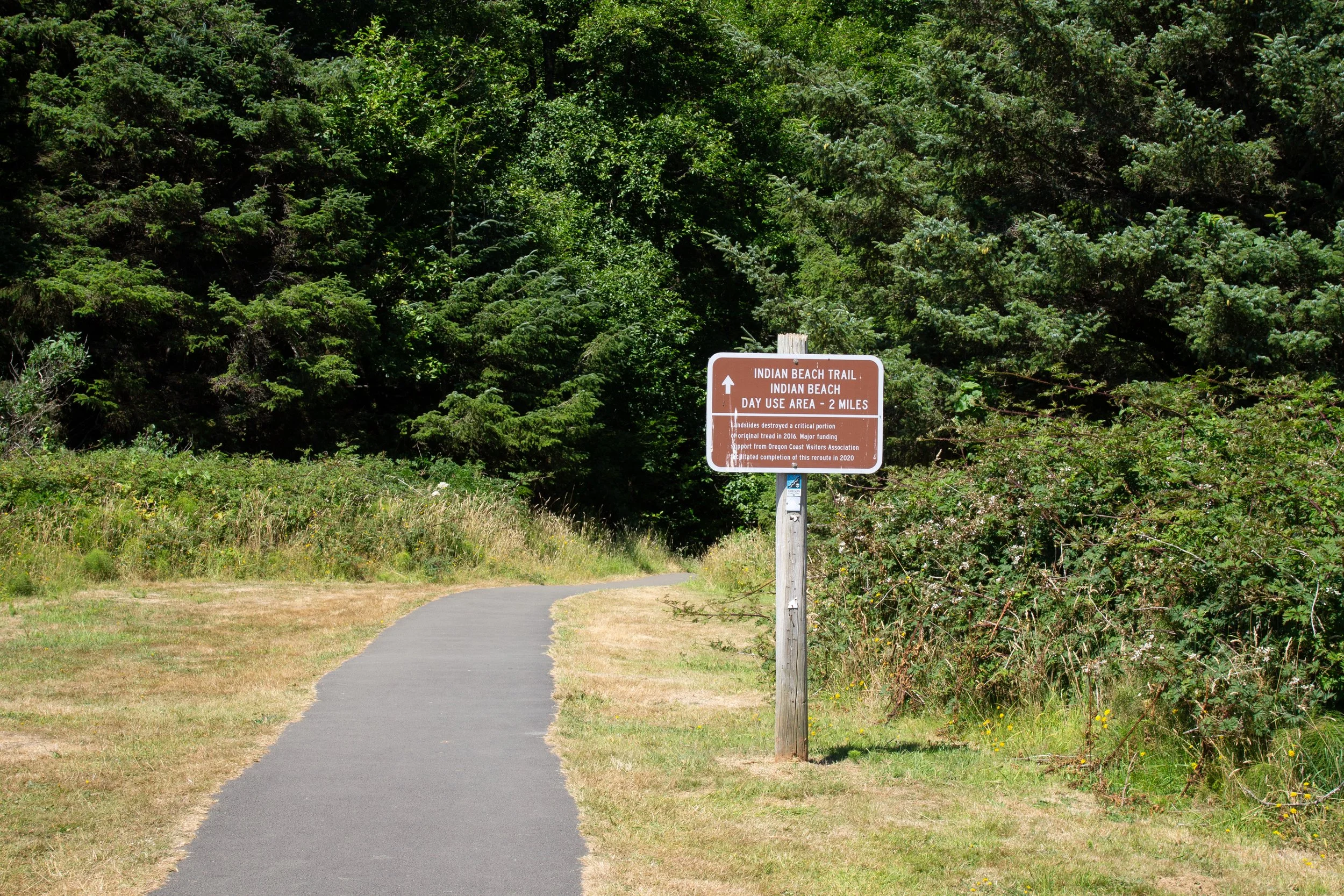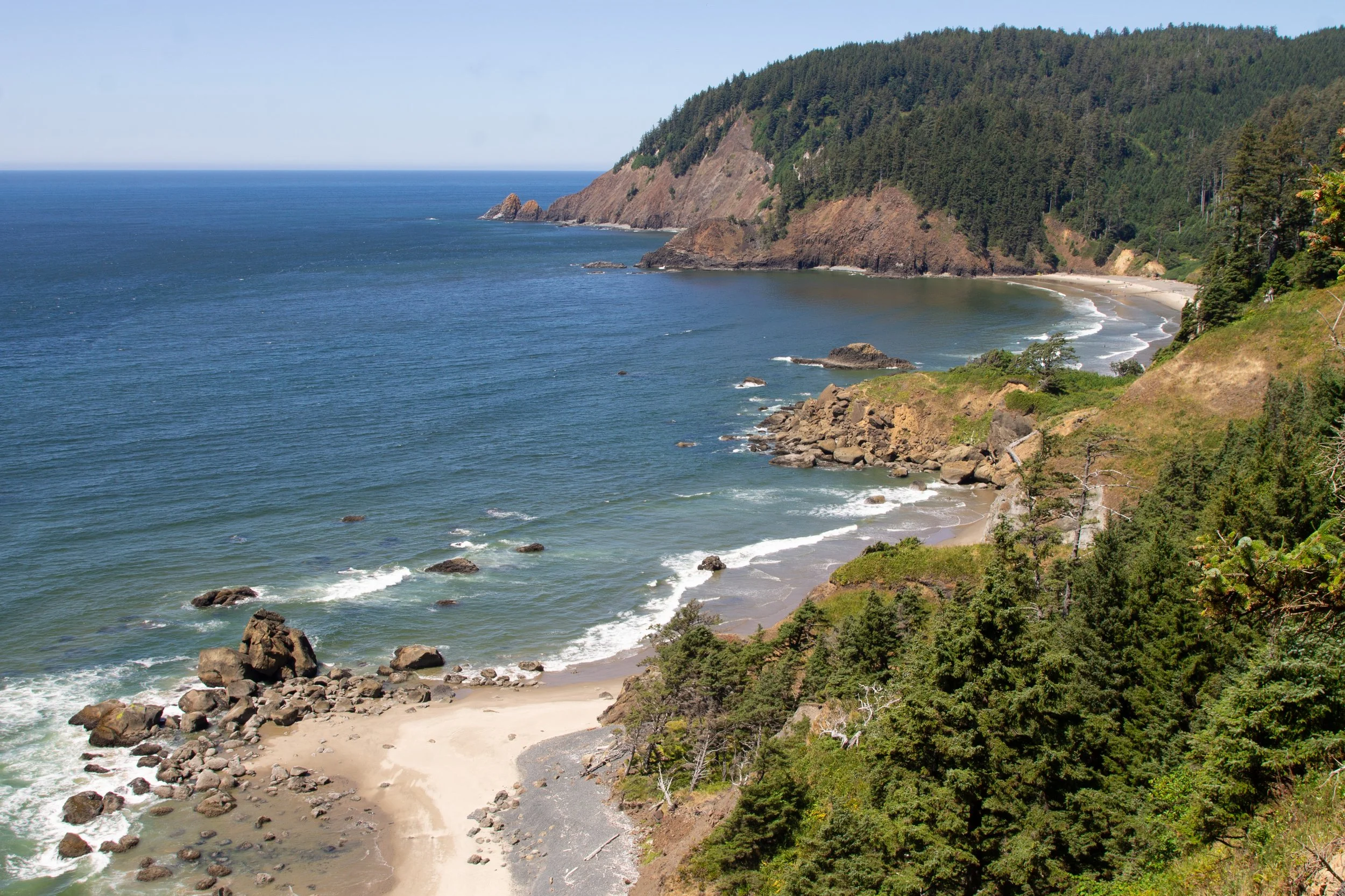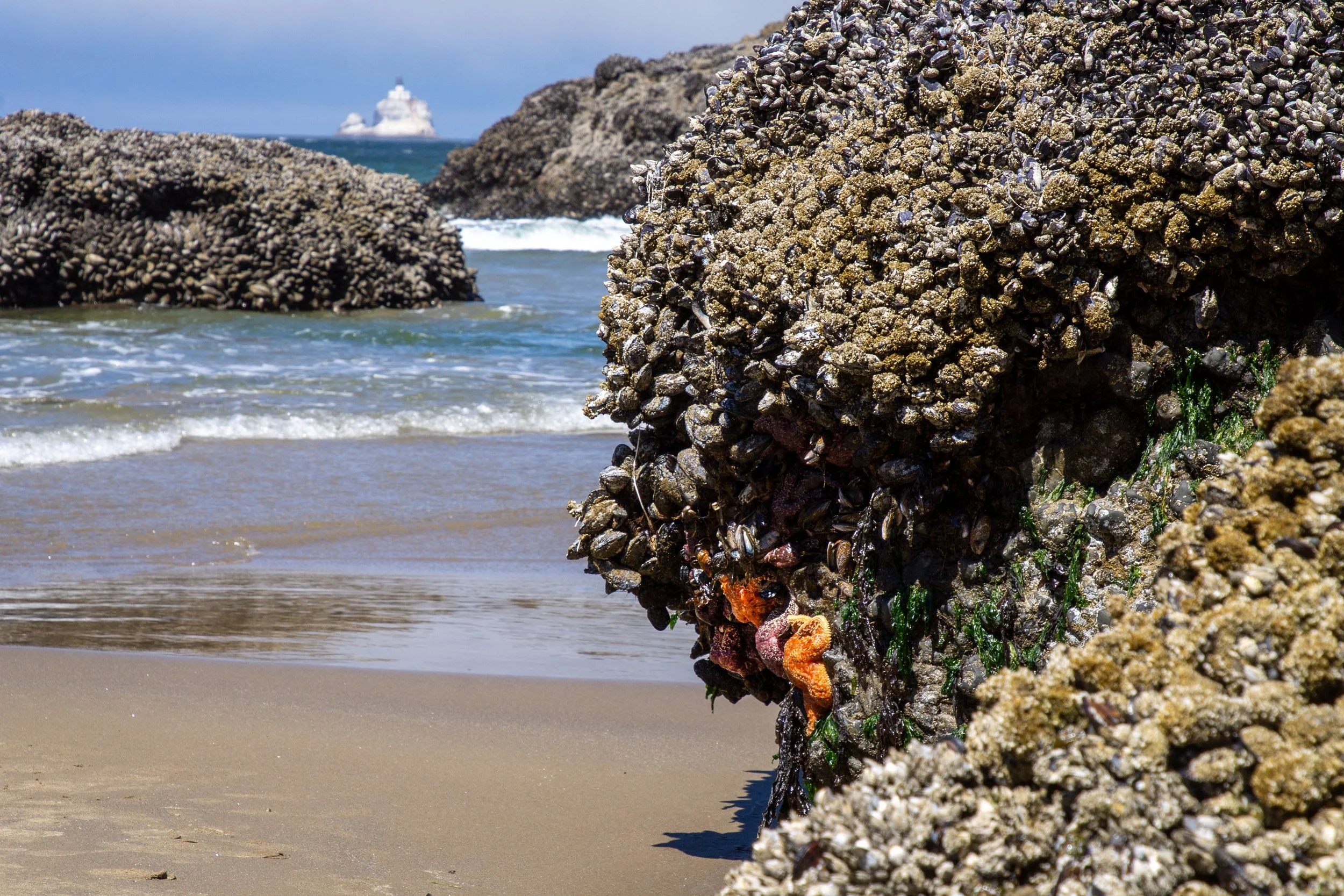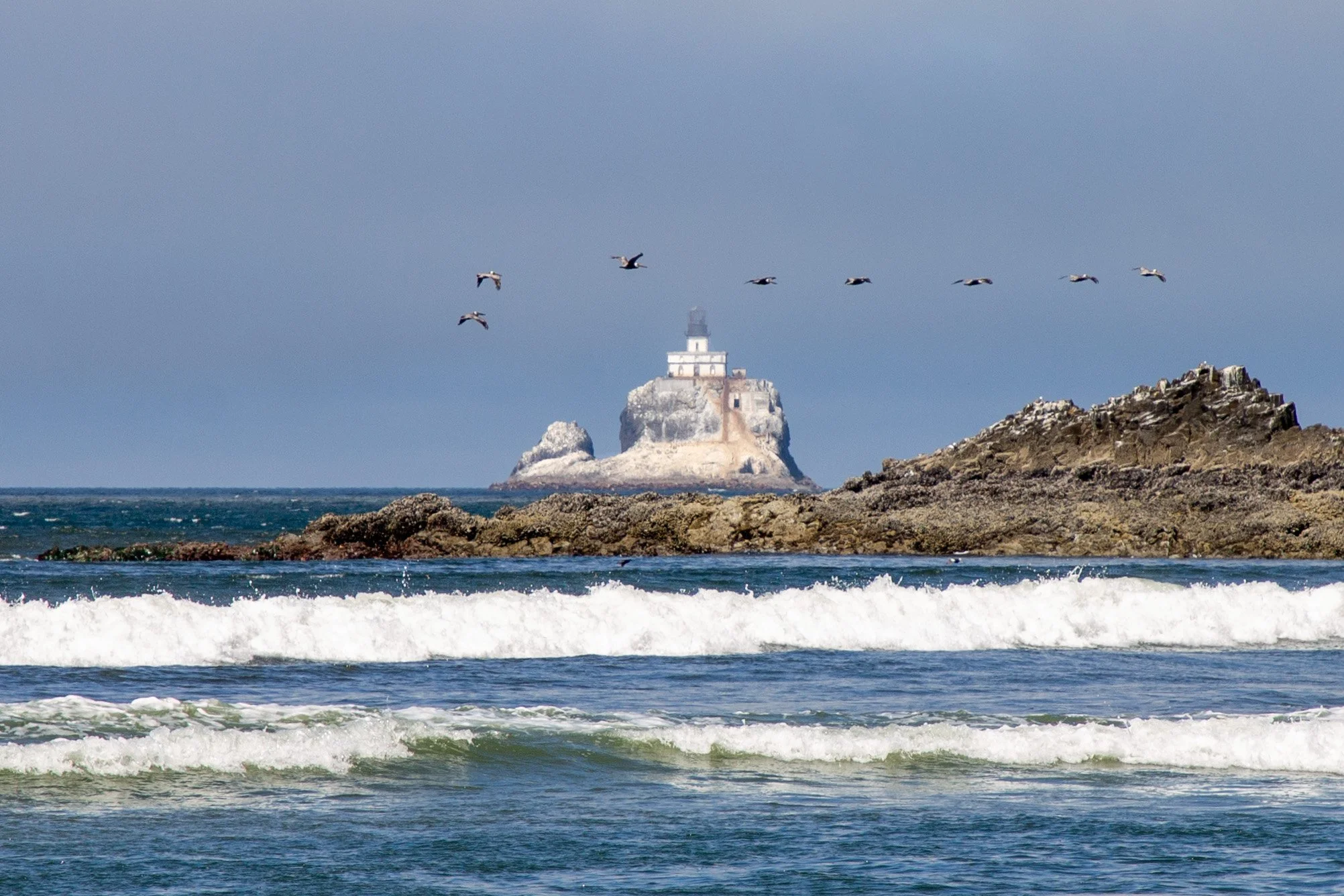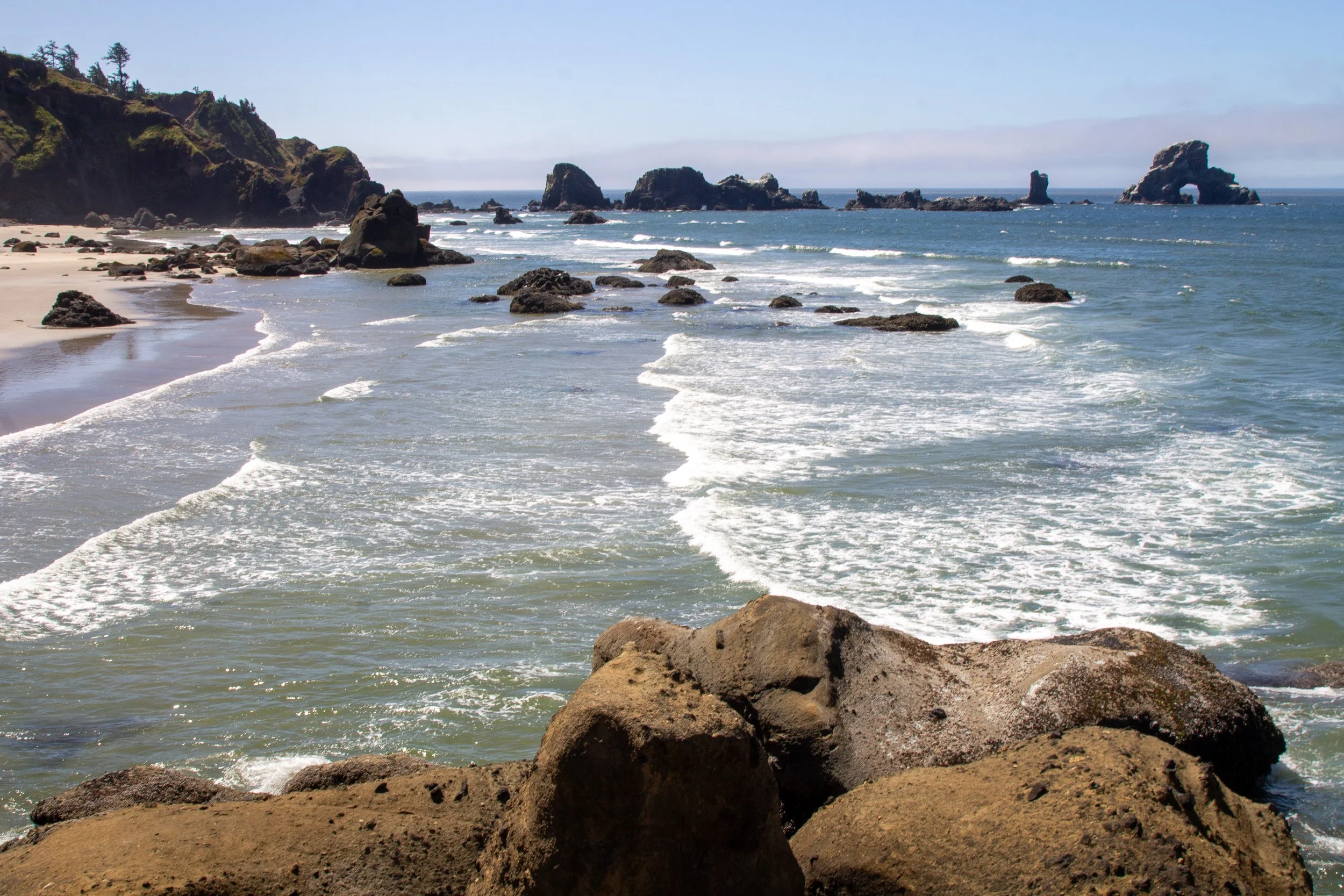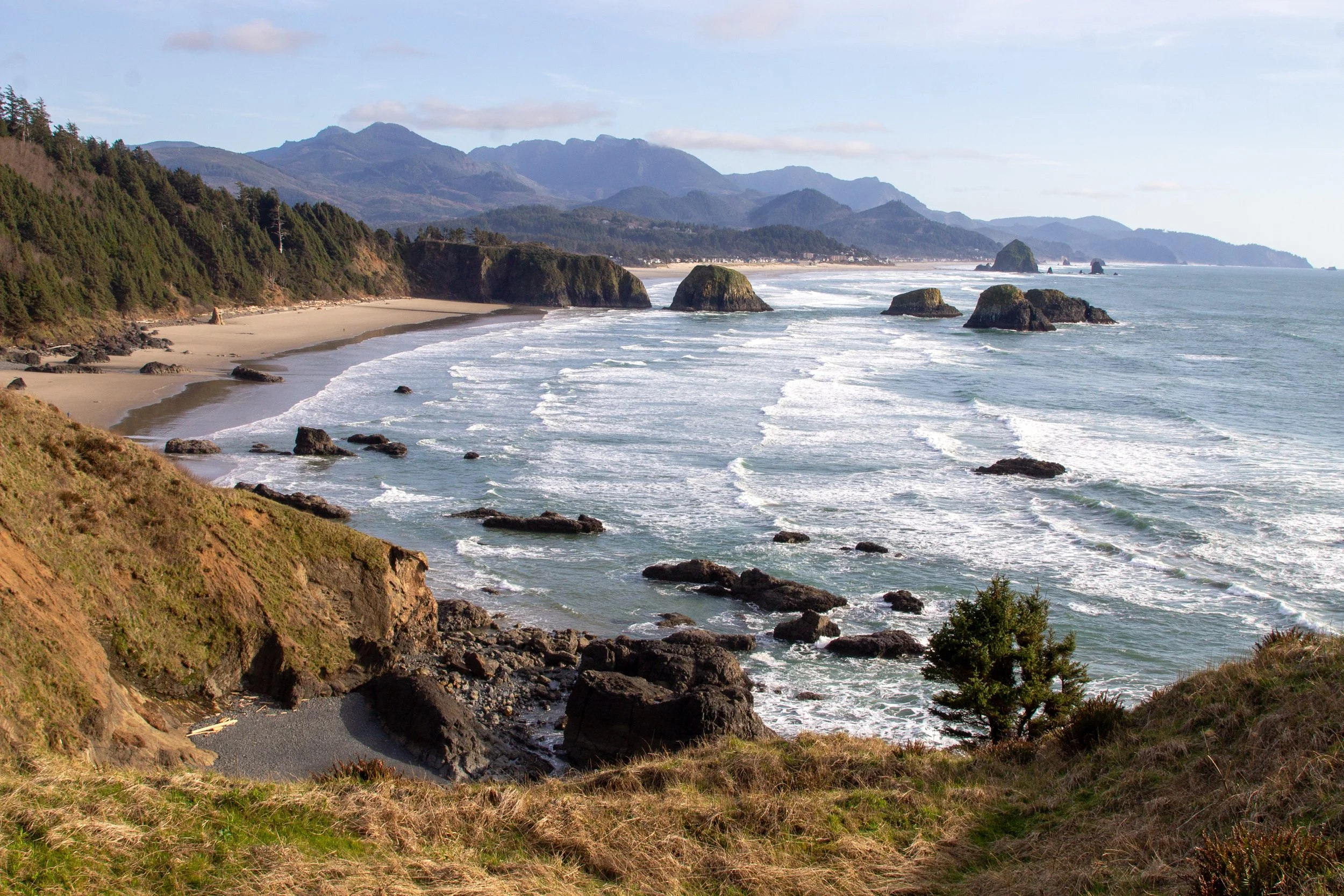Quick Guide to Indian Beach, OR
Ecola State Park in Cannon Beach encapsulates the rugged grandeur of the Oregon Coast. It’s a place where old-growth conifer forests cover wave-buffeted cliffs and pelicans fly overhead. The park has two beaches. Indian Beach is the only one you can reach by car. Fortunately, it’s a great one. This bow-shaped beach of sand and cobbles sits in a notch carved from the cliffs of Tillamook Head. A chain of sea stacks dotting the shoreline resembles a giant sea monster rising from the ocean. I’ve been to Indian Beach a few times, mostly after a long day of exploring the coast, when I only have time and energy for a quick visit. This last trip, I made it the main event and realized how much I’d been missing. Here’s everything you need to know about visiting Indian Beach.
Tidepool on Indian Beach
Know before you go
The parking lots in Ecola State Park, including Indian Beach, require the Oregon State Park Pass ($10/day or $30/year) or Oregon Pacific Coast Passport. You can buy a day pass on-site with a credit card.
Vault toilets and picnic tables are next to the Indian Beach parking lot.
Dogs are welcome on Indian Beach and its hiking trails.
The viewpoint overlooking the beach is paved and accessible. To get to the sand, you’ll need to take stairs and walk over uneven terrain.
Anemones on Indian Beach
Drive or hike to Indian Beach
There’s an easy way and a hard way to get to Indian Beach. The easy way is to drive straight there. Take Ecola State Park Rd from Cannon Beach and continue for three miles. Done. For more of a challenge, you can hike the Indian Beach Trail. Take Ecola State Park Rd for 1.5 miles and park at Ecola Point. Check out the incredible views at the overlook, then take the paved trail that starts from the picnic area.
Indian Beach Trail
The hike is a moderately difficult 4.5-mile round-trip trek through a jungly forest with some gigantic trees. The pavement ends pretty much immediately. The rest of the trail is occasionally rough and often muddy, with lots of ups and downs and tree roots. I’d wear hiking boots instead of sneakers. Most of it is too far inland to see the ocean, but you’ll get a few cool overhead views of Indian Beach at the beginning and end of the hike.
Views from the Indian Beach Trail
Indian Beach
Whether you hike or drive to Indian Beach, you’ll have a picture-perfect view when you arrive. A row of picnic tables along the edge of a short coastal bluff overlooks the crescent-shaped beach. At high tide, waves roll up onto the driftwood and cobbles. Low tide reveals a wide swathe of sand. Looking south, a steep headland tapers off to a point. Beyond it are the dozens of sea stacks that make Indian Beach recognizable at a glance. At the far end of the cluster is the large sea arch called Sea Lion Rock.
Parking lot viewpoint
A sign at the parking lot points toward the beach access. Before heading down, it’s worth stopping by the information panel that includes filming locations in Ecola State Park. Indian Beach appeared in Twilight (where it’s called La Push, Washington) and Point Break (where it’s called Bells Beach, Australia).
Beach access
Stairs lead down to the beach. The branches around the steps are dense enough to make it feel like a tunnel. A hidden picnic table tucked back in the stunted trees looks like a warren where forest creatures would lunch on greens and salal berries. It lacks the ocean views of the other tables, but instead has the charm of all secret things.
Stairs to the beach
In any season, Indian Beach is a beautiful place to have a stroll, admire the rock formations, and watch for seabirds. A couple of creeks flow across the sand. They’re pretty easy to wade through without getting wet feet. When I’ve visited in winter, I’ve been one of about four visitors. The solitude adds to the season’s moody romance. I saw a proposal from across the beach once on a foggy winter afternoon. Another time, a bride held her white dress above her ankles as she slopped through wet sand for a photo shoot. In summer, it’s packed and cheerful. You might see some surfers out in the water. Conditions can be variable, and it’s a better surfing destination if you have experience. People also do some beach-combing on Indian Beach. It’s not one of the hotspots for agates on the Oregon Coast, but you might find something interesting, especially after winter storms.
Indian Beach
My favorite time to visit Indian Beach is during low tide, when you can access more of the nooks and crannies. Both ends of the beach have tidepools. The best ones are to the south. Mussels, barnacles, sea stars, and anemones cover the rocks piled along the shore. Crabs scuttle between hidden crevices.
Low tide at Indian Beach
Low tide is a great time to see birds like black oystercatchers looking for snacks among the tidepool critters. Seabirds love the rocky shoreline around Cannon Beach. Pelicans are frequent visitors during the summer. Bald eagles often circle overhead. I can promise you a whole lot of gulls anytime.
Black oystercatcher
As you walk south on Indian Beach, you’ll see Tillamook Rock Lighthouse, aka Terrible Tilly, the Oregon Coast’s beautiful and haunting fiasco. The lighthouse sits a little over a mile offshore on top of a tiny basalt island. Its construction was fraught with problems from the start. The lead mason drowned during the initial site survey. The work crew survived, but contended with violent storms and inadequate shelter throughout the project. At one point, they were stranded for two weeks without supplies. Building the lighthouse took almost two years, and the problems didn’t stop after it was lit in 1881. Lighthouse keepers needed to rotate frequently because of the difficult conditions. After being decommissioned in 1957, Terrible Tilly changed hands several times. Today, it’s a resting place for human ashes. The rocks beneath the lighthouse are a favorite hangout spot for sea lions, although you’d need great binoculars or a telephoto lens to see them from the beach.
Pelicans fly over Tillamook Rock Lighthouse
Indian Beach has a hidden part. The headland at the south end is called Bald Point. At low tide on a calm day, an enterprising person could clamber over the rocks to find an extra little pocket cove on the other side. Proceed with caution and keep an eye on the tide if you visit.
The secret part
More hiking at Indian Beach
Clatsop Loop Trail
Indian Beach is the start of one of Ecola State Park’s best hikes, the Clatsop Loop Trail. This 3-mile loop begins in an old-growth forest and ends at a viewpoint overlooking Terrible Tilly. The return journey follows the coastline and has frequent views of the ocean. The hike retraces the route that the Lewis and Clark expedition took when they visited Indian Beach in search of whale blubber. You’ll also see traces of more modern history, the remains of an old WWII radar station that moss and ferns are slowly consuming.
For a longer journey, you can continue past the lighthouse viewpoint on the Tillamook Head Traverse Trail, which connects Ecola State Park to the town of Seaside. Unless you do a car shuttle, it’s 12 miles round-trip. You might want to begin at the trailhead in Seaside to skip the day-use fee at Indian Beach if you do the whole thing.
More in Ecola State Park
Ecola Point
Indian Beach is one of the two main attractions in Ecola State Park. The other is the famous viewpoint at Ecola Point. A short trail starting from the parking lot brings you to incredible views of Cannon Beach and its sea stacks, then to a westward-facing vista overlooking Terrible Tilly. Picnic tables on a grassy hilltop have views of the ocean in two directions. Besides the Indian Beach Trail, the Crescent Beach Trail also starts here. This muddy 2.5-mile hike leads to a secluded beach that is only accessible on foot. Once you arrive, look for a small waterfall, craggy sea stacks, and, at low tide, sea caves.
Learn more about Ecola State Park.
Getting there
Ecola State Park is at the north end of Cannon Beach. The park’s roads are paved and in good condition. Drive slowly. Ecola State Park Rd is narrow, and it’s a squeeze with 2-way traffic and occasional pedestrians.
From Highway 26, take the exit for City Center/Ecola State Park. Continue onto Fir St, then take an immediate left onto E 5th St. In 0.1 miles, take another left onto Ecola State Park Rd. Follow Ecola State Park Rd for 1.5 miles, then keep right to head toward Indian Beach. Continue another 1.5 miles to reach the Indian Beach parking lot. The drive from Portland takes about 90 minutes.
Explore nearby
Find the best things to do in Cannon Beach.
Explore Oswald West State Park.


